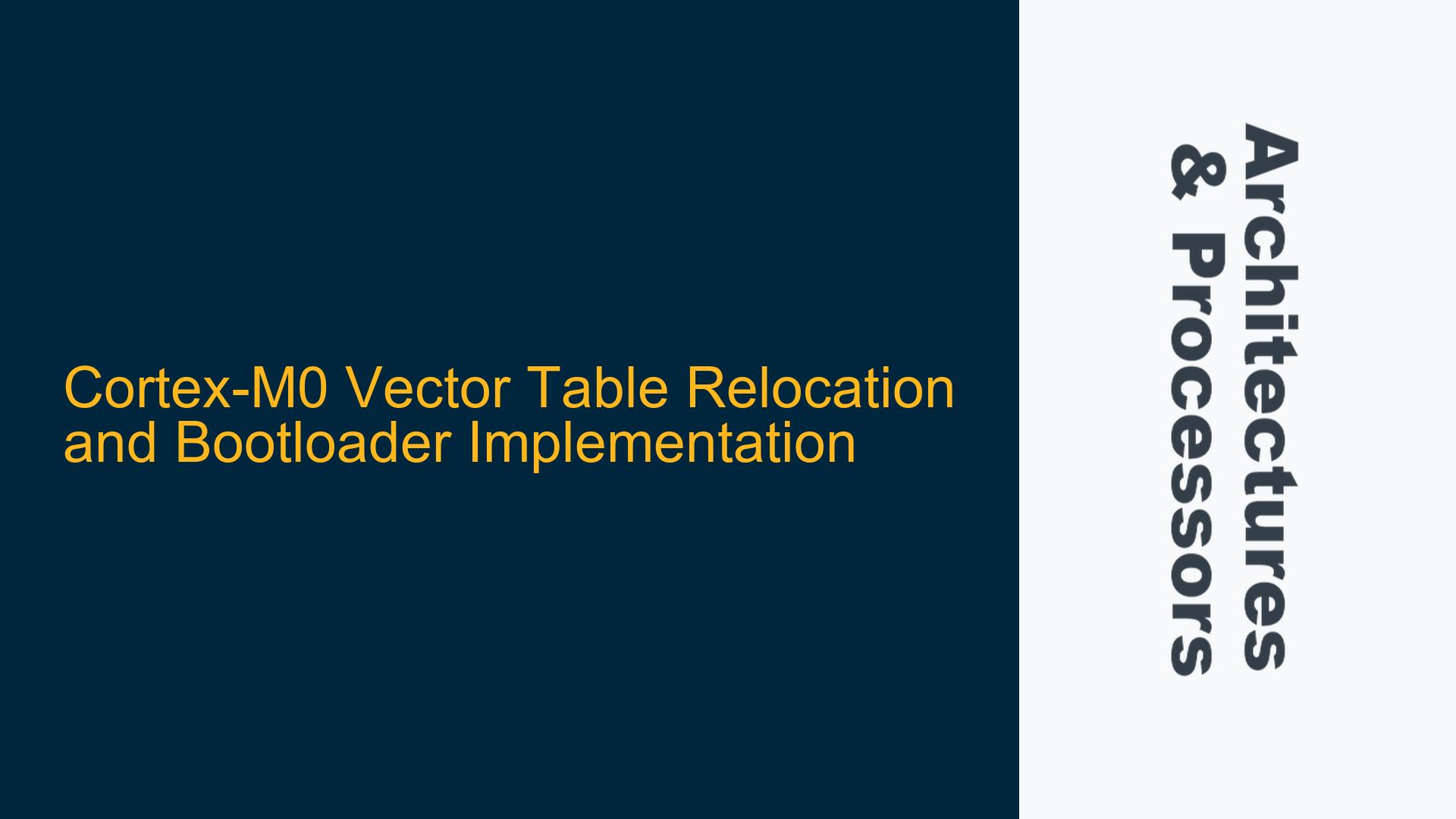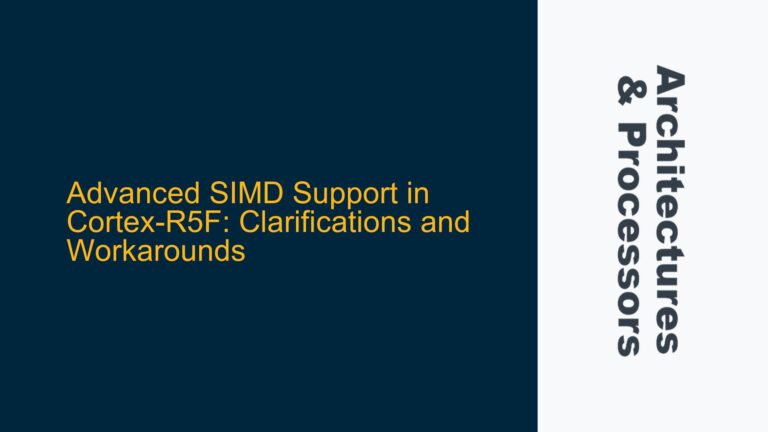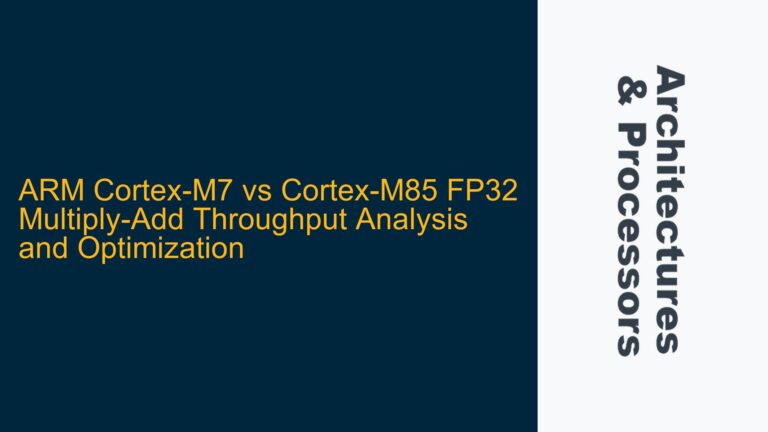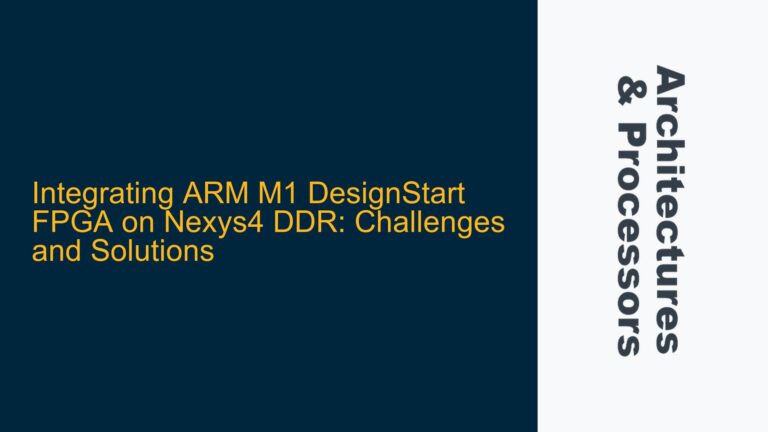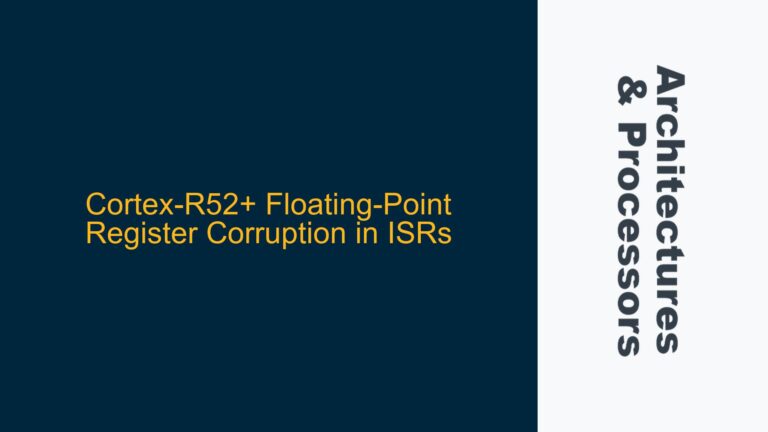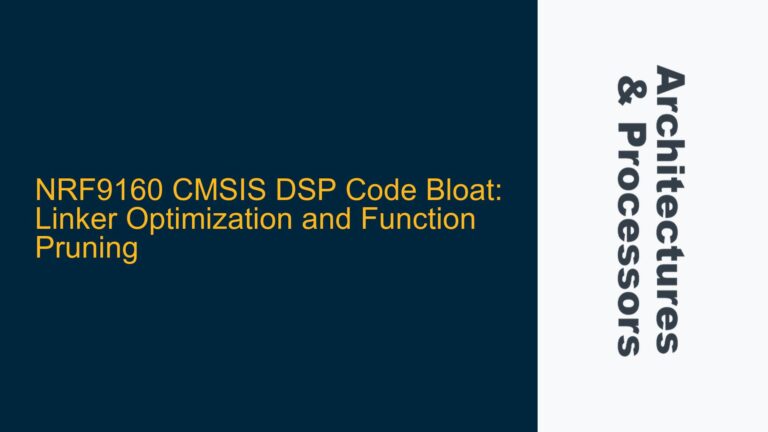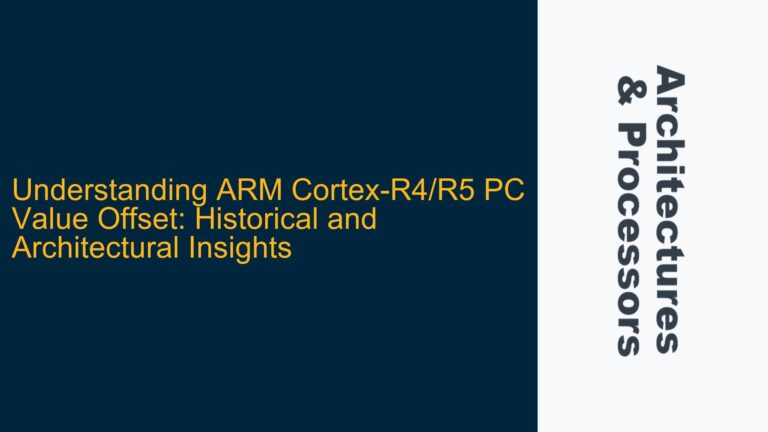ARM Cortex-M0 Vector Table Behavior and Bootloader Challenges
The ARM Cortex-M0 processor, being a member of the Cortex-M series, is designed for embedded applications where simplicity and low power consumption are critical. One of the key architectural features of the Cortex-M0 is its fixed vector table location at address 0x0. Unlike higher-end Cortex-M processors such as the Cortex-M3, M4, and M7, the Cortex-M0 does not include a Vector Table Offset Register (VTOR). This absence of VTOR means that the processor always fetches the initial stack pointer (MSP) and the reset vector from address 0x0 upon startup. Additionally, during interrupt servicing, the Cortex-M0 will always fetch the corresponding interrupt vector from the fixed address 0x0. This behavior poses significant challenges when implementing bootloaders or when attempting to relocate the vector table to SRAM or other memory regions.
The Cortex-M0’s fixed vector table location complicates scenarios where a bootloader and an application need to coexist in the same memory space. Typically, a bootloader resides in the lower portion of the flash memory, while the application code resides at a higher address. The bootloader is responsible for initializing the system, verifying the application’s integrity, and transferring control to the application. However, since the Cortex-M0 always fetches the vector table from 0x0, the bootloader must ensure that the correct vector table is accessible at this address at all times. This requirement necessitates careful memory remapping and vector table management.
The discussion highlights a proposed solution involving memory remapping and vector table copying. The idea is to use the REMAP feature, which is often available in microcontroller memory controllers, to dynamically switch the memory region mapped to address 0x0. For example, at power-up, the flash memory containing the bootloader’s vector table could be remapped to 0x0. After the bootloader completes its tasks, it could copy the application’s vector table to SRAM and remap the SRAM to 0x0. This approach allows the application’s interrupt vectors to be fetched from SRAM while the application code itself resides in flash memory at a different address.
However, this approach introduces several complexities. First, the REMAP feature is implementation-specific and may not be available on all Cortex-M0-based microcontrollers. Second, the timing and sequence of remapping operations must be carefully managed to avoid race conditions or incorrect vector fetches. Third, the bootloader must ensure that the application’s vector table is correctly copied to SRAM and that the SRAM is properly initialized before remapping. These challenges require a deep understanding of the Cortex-M0 architecture, the microcontroller’s memory controller, and the specific requirements of the bootloader and application.
Memory Remapping and Vector Table Management Strategies
The absence of VTOR in the Cortex-M0 necessitates creative solutions for vector table relocation. One common strategy is to use a combination of memory remapping and firmware-based vector table management. This strategy involves the following steps:
-
Power-Up Initialization: At power-up, the flash memory containing the bootloader’s vector table is remapped to address 0x0. This ensures that the Cortex-M0 fetches the correct initial stack pointer and reset vector from the bootloader’s vector table.
-
Bootloader Execution: The bootloader executes its initialization code, which may include hardware initialization, application integrity checks, and other system setup tasks. During this phase, the bootloader must ensure that its own vector table remains accessible at address 0x0.
-
Vector Table Copying: Before transferring control to the application, the bootloader copies the application’s vector table from flash memory to a predefined location in SRAM. This step requires careful attention to memory alignment and the size of the vector table.
-
Memory Remapping: After copying the application’s vector table to SRAM, the bootloader remaps the SRAM to address 0x0. This ensures that the Cortex-M0 fetches the application’s interrupt vectors from SRAM during interrupt servicing.
-
Application Execution: The bootloader transfers control to the application by jumping to the application’s reset vector, which is now located in flash memory at a higher address. The application executes normally, with its interrupt vectors fetched from SRAM.
This strategy relies heavily on the availability and proper configuration of the memory remapping feature. In microcontrollers where remapping is not supported, alternative approaches must be used. One such approach involves using a firmware-based vector table management scheme, where the bootloader and application share a common exception handler. This handler checks a flag or variable to determine whether the bootloader or application is currently active and branches to the appropriate interrupt service routine (ISR) based on this flag.
Implementing Firmware-Based Vector Table Management
In microcontrollers without memory remapping capabilities, firmware-based vector table management can be used to achieve vector table relocation. This approach involves the following steps:
-
Shared Exception Handler: The bootloader and application share a common exception handler. This handler is responsible for determining the active context (bootloader or application) and branching to the appropriate ISR.
-
Context Flag: A flag or variable stored in SRAM is used to indicate the active context. The bootloader sets this flag to indicate that it is active, and the application sets the flag to indicate that it is active.
-
Exception Handling: When an exception occurs, the shared exception handler reads the context flag to determine the active context. If the bootloader is active, the handler branches to the bootloader’s ISR. If the application is active, the handler branches to the application’s ISR.
-
Vector Table Lookup: The shared exception handler uses the Interrupt Program Status Register (IPSR) to determine the exception number. This number is used as an index into the appropriate vector table (bootloader or application) to fetch the address of the ISR.
-
Branch to ISR: The handler branches to the fetched ISR address, executing the appropriate exception handling code.
This approach introduces additional latency to exception handling due to the need to check the context flag and perform the vector table lookup. However, it provides a flexible and portable solution for vector table relocation in microcontrollers without VTOR or memory remapping capabilities.
Detailed Troubleshooting and Implementation Guidance
To successfully implement vector table relocation and bootloader functionality on the Cortex-M0, the following detailed steps and considerations should be taken into account:
-
Memory Layout Planning: Carefully plan the memory layout to ensure that the bootloader and application have distinct and non-overlapping memory regions. The bootloader should reside in the lower portion of flash memory, while the application should reside at a higher address. The SRAM region used for the application’s vector table should be clearly defined and properly aligned.
-
Vector Table Alignment: Ensure that the vector table is properly aligned in memory. The Cortex-M0 requires the vector table to be aligned to a 512-byte boundary. Misalignment can lead to incorrect vector fetches and system instability.
-
Memory Remapping Configuration: If the microcontroller supports memory remapping, configure the memory controller to remap the appropriate memory regions to address 0x0 at the correct times. This typically involves writing to specific memory controller registers during the bootloader’s execution.
-
Vector Table Copying: Implement a robust mechanism for copying the application’s vector table from flash memory to SRAM. This mechanism should handle alignment, size, and potential errors during the copying process.
-
Context Flag Management: Implement a reliable mechanism for setting and clearing the context flag. This flag should be stored in a non-volatile memory region (e.g., SRAM) and should be protected from accidental modification.
-
Exception Handler Implementation: Implement the shared exception handler with careful attention to performance and correctness. The handler should efficiently determine the active context and branch to the appropriate ISR with minimal latency.
-
Testing and Validation: Thoroughly test the bootloader and application to ensure correct behavior under all conditions. This includes testing interrupt handling, memory remapping, and vector table copying. Use debugging tools to verify that the correct vectors are being fetched and that the system behaves as expected.
-
Error Handling: Implement error handling mechanisms to detect and recover from potential issues such as vector table misalignment, memory remapping failures, and context flag corruption.
By following these detailed steps and considerations, developers can successfully implement vector table relocation and bootloader functionality on the Cortex-M0, even in the absence of VTOR. This approach requires careful planning and attention to detail but provides a flexible and portable solution for managing vector tables in Cortex-M0-based systems.
